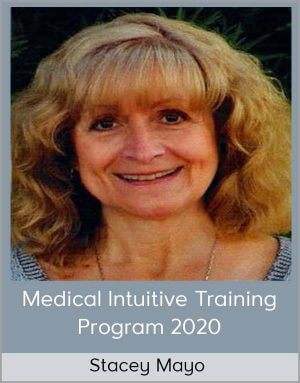Medic Mind 2020 – AQA A-Level Biology
$5.00$15.00 (-67%)
So, enrol onto our course today and start your journey towards an A* in A-Level Biology!
Medic Mind 2020 – AQA A-Level Biology (AQA A-Level Biology Online Course 2020)
Check it out: Medic Mind 2020 – AQA A-Level Biology (AQA A-Level Biology Online Course 2020)
AQA A-Level Biology Online Course 2020
The Online Revision Platform Guaranteed to get you A* in AQA A-Level Biology
Let me ask you a few questions,
Are you stuck indoors due to COVID-19?
Are you in Year 11 with GCSEs cancelled and want to get a head start?
Are you in Year 12 and struggling to motivate yourself to revise for A-Levels?
If the answer to any of these questions is “yes”, then you’ve come to the right place – a self-study online course for AQA A-Level Biology and Chemistry
Introduction
A-Level Biology is HARD, there’s no denying it! Trying to cram all the theory, memorising all the practicals and applying it all to exam technique – they don’t make it easy. It’s no wonder that only 8% last year scored the top A* grade required by many universities – Many missed out on their university and had to reapply.
How would you feel if there was a revision tool that mapped out the entire specification in a scientifically-proven method of getting results? A tool which showed you how to perfect exam technique and had a bank of all possible questions AQA have asked from 2003
That’s why we’ve build this course with videos, textbooks, flashcards, past papers and more.
Best of all, it has been verified and certified by the UK’s Leading AQA A-Level Biology Examiners
What does our course include?
• Access to both AQA A-Level Biology and Chemistry
• 100 Video Tutorials for all parts of AQA Specification
• Revision Notes for Every Chapter with Exclusive Examiner Tips
• Past Paper Compilations by Topic and Spec
• 5000+ Flashcards
• Access until June 2022
No more spending ages looking for past papers or hours trying to learn a topic that isn’t explained well in the official textbook.
Next Steps
All you need to do is click “Enroll in Course” button and you’ll get access to all of the above for one single joining fee of £15 (No monthly charge). You will get access until June 2022 for both Biology and Chemistry
Do you want to take your chances with just reading a textbook and doing some past papers or do you want to go the extra mile by covering all your bases to secure your A* and your dream university?
So, enrol onto our course today and start your journey towards an A* in A-Level Biology!
We’re so confident you’ll find this course useful that if you don’t get an A/A*, we’ll give you ALL your money back – no questions asked! – Isn’t that amazing?
Course Curriculum
1. Biological Molecules (Content: Videos + Flashcards + Textbook)
1.1 Monomers and Polymers (5:38)
1.2 Carbohydrates (16:05) 1.3
Lipids (7:49) 1.4
Proteins (10:08) 1.5
DNA and RNA (10:30)
1.6 ATP (5:29)
1.7 Water (9:37)
1.8 Inorganic Ions (7:19)
1. Biological Molecules (Exam Technique: Examiner’s Tips + Past Papers)
1.1 Monomers and Polymers
1.2 Carbohydrates
1.3 Lipids
1.4 Proteins
1.5 ATP
1.6 Nucleic Acids
1.7 Water
Want personalised help? Sign up for 1-1 Tutoring (2:34)
2a. Cells (Content: Videos + Flashcards + Textbook)
2.1.1 Structure of Eukaryotic Cells (5:35)
2.1.2 Cell Organelles (27:01) 2.1.3
Structure of Prokaryotes and Viruses (8:23)
2.1.4 Methods of Studying Cells (18:45)
2.1.5 Cell Division, Cell Cyle and Mitosis (16:08) 2.1.6 Binary Fission and Viral Replication (4:17)
2.1.7 Investigating Mitosis (8:04) video icon 2.1.8 Structures of Cell Membranes (15:51) video icon 2.1.9 Transport Across Cell Membranes (21:38)
2a. Cells (Exam Technique: Examiner’s Tips + Past Papers))
text icon 2.1.1 Eukaryotic Cells
text icon 2.1.2 Organelles
text icon 2.1.3 Prokaryotes and viruses
text icon 2.1.4 studying cells text icon 2.1.5 Cell Division text icon 2.1.6 Binary Fission text icon 2.1.7 Investigating Mitosis
2b. Immunity
video icon 2.2.1 Antigens and Self Tolerance (8:39)
video icon 2.2.2 Phagocytosis (6:32) video icon 2.2.3 Adaptive Immune Response (7:36) video icon 2.2.4 Antibodies (9:41) video icon 2.2.5 Types of Immunity and Vaccination (8:06) video icon 2.2.6 HIV (9:32)
2b. Immunity (Exam Technique: Examiner’s Tips + Past Papers))
text icon 2.2.1 Antigen and Self Tolerance
text icon 2.2.2 Phagocytosis text icon 2.2.3 Adaptive immunity text icon 2.2.4 Antibodies text icon 2.2.5 Immunity and Vaccinations text icon 2.2.6 HIV
3. Exchange Between Organisms
video icon 3.1 Surface Area to Volume Ratio (5:05)
video icon 3.2a Gas Exchange (13:09) video icon 3.2b Gas Exchange (20:27) video icon 3.2c Gas Exchange (4:04) video icon 3.3a Digestion and Transport (11:52) video icon 3.3b Digestion and Transport (5:36) video icon 3.3c Digestion and Transport (7:40)
3. Exchange between Organisms (Exam Technique: Examiner’s Tips + Past Papers))
text icon 3.1 Surface area to volume ratio
text icon 3.2 Gas Exchange text icon 3.3 Digestion and Absorption text icon 3.4.1 Mass transport in animals text icon 3.4.2 Mass Transport in Plants
4. DNA and Genes
video icon 4.1 DNA, Genes and Chromosomes (16:31)
video icon 4.2 DNA and Protein Synthesis (17:36) video icon 4.3 Mutations (8:07) video icon 4.4 Meiosis (15:25) video icon 4.5 Evolution and Natural Selection (11:57) video icon 4.6 Species and Taxonomy (13:10) video icon 4.7 Biodiversity within a community (11:51) video icon 4.8. Investigating Biodiversity (11:33)
4 Genetic information, variation and relationships (Examiner Tutorials)
text icon 4.1 Genes, DNA and Chromosomes
text icon 4.2 DNA and Protein Synthesis text icon 4.3 Mutations text icon 4.4 Genetic diversity and adaptationkey text icon 4.5 Species and Taxonomy text icon 4.6 biodiversity within a community text icon 4.7 Investigating diversity
5 Energy transfers in and between organisms (A-level only)
video icon 5.1 Photosynthesis (33:10)
video icon 5.2 Respiration (33:36) video icon 5.3 Energy and Ecosystems (14:20) text icon 5.4 Nutrient Cycles
5 Energy transfers in and between organisms (Examiner Tutorials)
text icon 5.1 Photosynthesis
text icon 5.2 Respiration text icon 5.3 Energy and Ecosystems text icon 5.4 Nutrient Cycles
6 Organisms respond to changes in their internal and external environments (A-level only)
video icon 6.1.1 Survival and Response (13:22)
video icon 6.1.2 Receptors (8:26) video icon 6.1.3 Control of Heart Rate (9:38) video icon 6.2.1 Nerve Impulses (14:52) video icon 6.2.2 Synaptic Transmission (14:46) video icon 6.3 Skeletal Muscle Effectors (15:39) video icon 6.4.1 Principles of Homeostasis and Negative Feedback (17:37) video icon 6.4.2 Control of Blood Glucose Concentration (22:50) video icon 6.4.3 Control of Blood Water Potential (19:55)
6 Organisms respond to changes in their internal and external environments (Examiner Tutorials)
text icon 6.1.1 Survival and Response
text icon 6.1.2 Receptors text icon 6.1.3. Control of Heart Rate key text icon 6.2.1 Nervous Impulses text icon 6.2.2 Synaptic Transmission text icon 6.3 skeletal muscles key text icon 6.4.1 negative feedback text icon 6.4.2 Blood Glucose text icon 6.4.3 Control of Blood Water Concentration
7 Genetics, populations, evolution and ecosystems (A-level only)
video icon 7.1 Inheritance (18:49)
video icon 7.2 Populations (7:34) video icon 7.3 Evolution may lead to speciation (19:23) video icon 7.4 Populations in Ecosystems (21:48)
7 Genetics, populations, evolution and ecosystems (Examiner Tutorials and Past Papers)
text icon 7.1 Inheritance
text icon 7.2 Populations text icon 7.3 evolution leading to speciation text icon 7.4. populations in ecosystems key
8 The control of gene expression (Exam Technique: Examiner’s Tips + Past Papers)
text icon 8.3 Using genome projects
text icon 8.1 alteration of base sequence text icon 8.2.1 Most of the cells in the DNA is not translated text icon 8.2.2 Control of transcription and translation text icon 8.2.3 gene expression text icon 8.4.2 DNA probes text icon 8.4.3 genetic fingerprinting text icon 8.4.1 Recombinant DNA
























